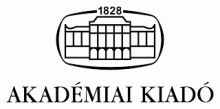Resource information
The vegetation dynamics of semi-arid and arid landscapes are temporally and spatially heterogeneous and subject to various disturbance regimes that act on decadal scales. Traditional field-based monitoring methods have failed to sample adequately in time and space in order to capture this heterogeneity and thus lack the spatial extent and the long-term continuous time series of data necessary to detect anomalous dynamics in landscape behavior. Time series of ecological indicators of land degradation that are collected synoptically from local to global spatial scales can be derived from the 33-year and continuing Landsat satellite archive. Consequently, a retrospective study was conducted on a commercially grazed sagebrush steppe dominated Utah landscape using a time series of standardized Landsat imagery for the period 1972 to 1997. The study had the objectives to (1) characterize and map the historical trends of a remotely-sensed index of vegetation response, a correlate of vegetation cover or phytomass, and (2) to retrospectively infer the cause of this response to historical records of grazing and wet and drought periods. A time series of dry season vegetation index maps were statistically clustered to generate a spatio-temporal map of three coarse trends of vegetation response, i.e., declining, stable, and increasing trends. This study showed that 71% of the landscape's locations had an increasing trend and 29% had a stable trend over the 26-year period. The increasing trend locations were positively correlated with site water balance [the Palmer Drought Severity Index (PDSI)], i.e., vegetation response increased during wet periods and decreased during drought. The increasing trend was positively and negatively (non-linearly) correlated with grazing in individual paddocks from 1980 to 1997.



